
Croatia facts and history in brief
Zagreb
Excerpted from Wikipedia, the free encyclopedia.
Zagreb (pronounced ZAH-greb) is the
capital city of Croatia.
The city's population was 779,145 in 2001,
1,088,841 in its metropolitan area which
includes Samobor, Velika Gorica and Zapresic.
The majority of its citizens
are Croats with 91.94% (2001 census).
The city is situated between the southern
slopes of Medvednica mountain and the
northern bank of the Sava river, it
is 120 m above sea level,
located at 45°48' N 15°58' E.
Its favourable geographic position in the
southwestern part of the Pannonian Basin,
which extends to the Alpine, Dinaric,
Adriatic and Pannonic regions, provides an
excellent connection for traffic between
Central Europe and the Adriatic Sea.
The traffic position, concentration of
industry (metal processing, electrical
appliances, textiles, chemicals,
pharmaceuticals (Pliva), printing and
leather industries, wood processing,
paper etc.), scientific and research
institutions and industrial tradition
underlie its leading economic position.
The city is relatively prosperous by
Eastern European standards, albeit the
average incomes and prices are still
lower than farther in the West.
Zagreb seats central state administrative
bodies and almost all
government ministries.
History
While the human habitats were present at
the wider city area since the Neolithic
(including the well-preserved Roman town
of Andautonia), its modern name was recorded
for the first time in the 11th century (1094).
In that year the Hungarian King Ladislaus
founded a bishopric on the Kaptol hill.
An independent secular community developed
on a neighbouring hill Gradec (Gric).
The settlements suffered greatly under the
Mongol invasion of 1242, but when they
abruptly left, King Bela IV declared Gradec
a royal autonomous city in order
to attract foreign artisans.
During the 14th and 15th centuries, the two
communities actively tried to best each other
- economically and politically.
The bishopric would excommunicate Gradec
which might respond by burning Kaptol.
They only worked together for the occasional
large commercial venture - such as the three
yearly fairs each lasting two weeks.
These two mediaeval hills, Gradec and Kaptol,
finally merged into one community, Zagreb,
in the early 17th century.
They now form the cultural centre of the
modern city (the economic and traffic centre
has shifted southwards since).
The bishopric of Kaptol has since become
the Archbishopric of Zagreb.
The construction of the railway embankment
(1860) enabled the old suburbs, which did
not represent an urban whole up to then,
to merge gradually into Donji Grad,
characterized by a regular block pattern.
During the Austro-Hungarian era Zagreb was
called by its German name Agram.
Working-class quarters emerged between the
railway and the Sava and residential quarters
on the hills of the southern slopes of
Medvednica between the two World Wars.
The blocks between the railway and the Sava
were built after the Second World War followed
from the mid-1950s by new residential areas
south of the Sava river, the
so-called Novi Zagreb (New Zagreb).
The city also expanded towards the west and
the east and "consumed" what were once mere
villages at Dubrava, Podsused, Jarun, Blato etc.
The cargo railway hub and the international
airport Pleso were built
south of the Sava river.
The biggest industrial zone (Zitnjak) in the
southeast represents an extension of the
industrial zones on the eastern outskirts
of the city, between the Sava
and the Prigorje region.
Urbanized lines of settlements connect Zagreb
with the centres in its surroundings:
Sesvete, Zapresic, Samobor, Dugo Selo
and Velika Gorica.
Sesvete is the closest one to become a part
of the conurbation and is in fact already
included in the City of Zagreb rather than
the Zagreb county (which excludes the city).
Transport
There are three main transit connections:
the western, towards Ljubljana, Slovenia
and on to Western Europe;
the eastern, towards Slavonia and on
to Southeastern Europe and the Near East; and
the southern, towards Rijeka, Croatia's
biggest port in the Kvarner bay and Split
in Dalmatia, the second largest Croatian
city and also an important port.
The railway running along the Sutla river
and the Zagorje main road (Zagreb -
Maribor - Vienna), as well as traffic
connections with the Pannonian region
and Hungary (the Zagorje railroad, the
roads and railway to Varazdin - Cakovec
and Koprivnica) are linked
with the truck routes.
The southern railway connection to Split
operates on a line via the Lika region
(renovated in 2004 to allow for a five-hour
journey); a faster line along the Una
river valley is currently out of use
and in decay due to unsettled border
crossing issues with Bosnia and Herzegovina.
The railway and the expressway along the
Sava river that run to Slavonia and
further to Belgrade are the fastest
traffic lines in the country.
The city has a reasonably well developed
road network with several of the main lines
up to four tracks wide and a full-profile
expressway encircling most of the city.
There is some congestion in the city
centre and parking is also a problem.
Cars parked on the pavements often make
it hard for pedestrians to get past.
Public transportation in the city is
organized in two layers: the inner
parts of the city are mostly covered
by trams and the outer suburbs
are linked with buses.
The public transport company, ZET (Zagrebacki
Elektricni Tramvaj, Zagreb Electric Tram),
receives a subsidy from the city council
and so the fares are relatively cheap
but they can get very crowded at peak times.
A single funicular near the city centre is
something of a tourist attraction.
Taxis are generally only used for transport
from the railway station and the airport
due to their relatively high price.
In recent years, the state rail operator HZ
(Hrvatska Zeljeznica, Croatian Railways)
has been trying to organize a net of
suburban trains in metropolitan Zagreb area.
As of 2004, it's been partially organized
in directions east-west and vice versa.
Surroundings
The wider Zagreb area has been constantly
inhabited ever since the prehistoric period,
witnessed by the archaeological findings
in the Veternica cave from the Paleolithic
and the excavation of the remains of a
destroyed Roman town of Andautonia near
the present village of Scitarjevo.
Picturesque ex-villages on the slopes of
Medvednica: Sestine, Gracani and Remete
are arranged around the city like beads
of a necklace, and maintain their rich
tradition even today: folk costumes,
Sestine umbrellas, gingerbread products, etc.
The Medvednica mountain (Zagrebacka gora),
with its highest peak Sljeme (1,033 m),
provides a panoramic view of metropolitan
Zagreb, the Sava and the Kupa valleys,
the region of Hrvatsko Zagorje. From the
top of the mountain, and during fair weather,
the vista reaches as far as Velebit mountain
and snow-capped peaks of the Julian
Alps in nearby Slovenia.
There are several mountain huts offering
accommodation and restaurants
providing refreshment for hikers.
Skiers visit Sljeme which has four ski-runs,
three ski-lifts and a chairlift.
The old Medvedgrad, a medieval burg built
in the 13th century and recently restored,
represents a special attraction
of the Medvednica hill.
It overlooks the western part of the city
and also has the Shrine of the Homeland,
a memorial place with eternal flame, where
Croatia pays reverence to all its heroes
fallen for homeland in its history,
customarily on the national holidays.
Travel agencies organize guided excursions
to the surroundings as well
as the sightseeing of Zagreb.
Tourism
Zagreb is a substantial tourist centre,
not only in terms of transit from West and
Central Europe to the Adriatic Sea but also
as a tourist destination.
Since the end of the war it has attracted a
fair number of tourists, but many tourists
that visit Croatia skip Zagreb in favor of
the beaches along the Adriatic coast and
the even older historic cities such as
Dubrovnik, Sibenik, Zadar and others.
Nevertheless, Zagreb celebrated its 900th
birthday in 1994 and it is not only rich
in cultural and historical monuments,
museums and galleries, but it also has a
variety of modern shops, and offers good
quality of diversified restaurants as
well as sports and recreation facilities.
It is a big centre of congress tourism,
economic and business events and trade fairs
not only in Croatia but also in this part of Europe.
Being an important junction point, it has
road, air, railway and bus connections
with European metropolises and all bigger
cities and tourist resorts in Croatia.
The historical part of the town, the Upper
Town and Kaptol, are a unique urban core
even in European terms, and thus represent
the target of sightseeing tours.
The old town's streets and squares can be
reached on foot, starting from Ban Josip
Jelacic Square, the central part and the
heart of Zagreb, or by a funicular
on nearby Tomiceva Street.
The old core of the town includes many
famous buildings, churches, museums and
institutions as well as pleasant
restaurants and coffee bars.
Zagreb has many museums to reflect the history,
art and culture not only of Zagreb and
Croatia, but also of Europe and the world.
The city offers rich cultural
and artistic enjoyment.
There are about 20 permanent or
seasonal theatres and stages.
Zagreb hosts many domestic and
international events. Animafest, the
World Festival of Animated Films, takes place
each even year, and the Music Bienniale,
the international festival of avant-garde
music, every odd year and many others.
Numerous shops, boutiques, store houses and
shopping centres offer a variety
of good quality clothes.
Zagreb's offerings include crystal, china and
ceramics, nice wicker or straw baskets,
top-quality Croatian wines
and gastronomic products.
Zagreb is the site of the University of
Zagreb founded in 1669.
Zagreb is also home to the eponymous
film-producing company, Zagreb Film.
Zagreb is officially twinned with
the following towns and cities:
Mainz, Germany, since 1967,
St. Petersburg, Russia, since 1968,
Tromsų, Norway, since 1971,
Kyoto, Japan, since 1972,
Krakow, Poland, since 1975,
Lisbon, Portugal, since 1977
Pittsburgh, United States of America, since 1980,
Shanghai, China, since 1980,
Budapest, Hungary, since 1994,
Vienna, Austria, since 1994,
Sarajevo, Bosnia and Herzegovina, since 2001,
Ljubljana, Slovenia, since 2001.
External links

The above details were retrieved and condensed
from
(http://en.wikipedia.org/wiki/Zagreb)
August 2005
All text is available under the terms of the
GNU Free Documentation License (see
Copyrights for details).

Hui Chin and I visited Croatia during our European
travels in 2005.
We have enjoyed our stay in the country, but were very
disappointed with the train services.
Before our departure from new Zealand, we purchased
a rather expensive Regional Eurail Pass with added days
to cover any delays or staying longer in any place than
we have planned for.
Croatia, - at least between places we intended to visit
- have very poor train services.
We arrived from Austria, through Slovenia to Rijeka,
and although Rijeka connected by rail to Pula, our next
stop, the train service is very slow and sporadic.
To go from Pula to Zadar or Split, or Dubrovnik, we
either had to go through Zagreb with the consequent
delay or use the bus services, which we did have to
use throughout.
The roads are very good, so are the bus services, but
it meant extra expenses for us, with already paid for
rail passes.
With the good roads Croatia is catering for the neighbouring
countries drivers, not for the like of us, with limited
budgets, who can't afford a car or hired car in every
country we like to visit.

It was raining on and off
during our stay in Zagreb, but Hui Chin and I enjoyed
our stay.
Plenty of interesting, historical sights to see.

You can click on these photos for an enlargement.
2005
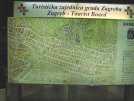 |
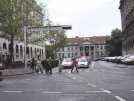 |
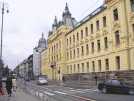 |
 |
| Zagreb |
Zagreb |
Zagreb |
Zagreb |
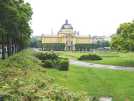 |
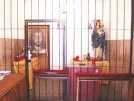 |
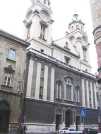 |
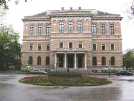 |
| Zagreb |
Zagreb |
Zagreb |
Zagreb |
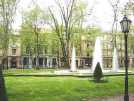 |
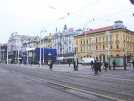 |
 |
 |
| Zagreb |
Zagreb |
Zagreb |
Zagreb |
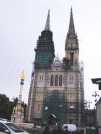 |
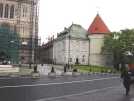 |
 |
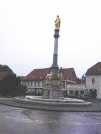 |
| Zagreb |
Zagreb |
Zagreb |
Zagreb |
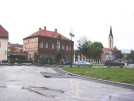 |
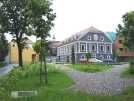 |
 |
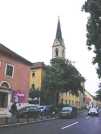 |
| Zagreb |
Zagreb |
Zagreb |
Zagreb |
 |
 |
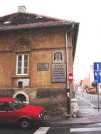 |
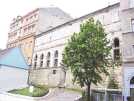 |
| Zagreb |
Zagreb |
Zagreb |
Zagreb |
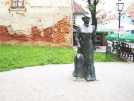 |
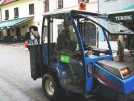 |
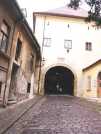 |
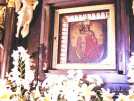 |
| Zagreb |
Zagreb |
Zagreb |
Zagreb |
 |
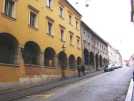 |
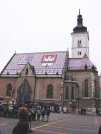 |
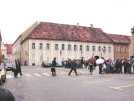 |
| Zagreb |
Zagreb |
Zagreb |
Zagreb |
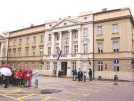 |
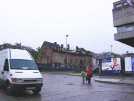 |
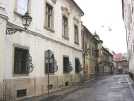 |
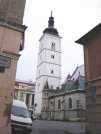 |
| Zagreb |
Zagreb |
Zagreb |
Zagreb |
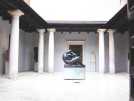 |
 |
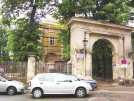 |
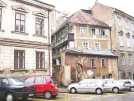 |
| Zagreb |
Zagreb |
Zagreb |
Zagreb |
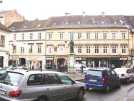 |
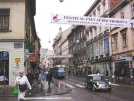 |
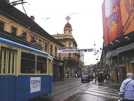 |
 |
| Zagreb |
Zagreb |
Zagreb |
Zagreb |
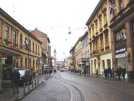 |
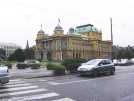 |
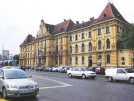 |
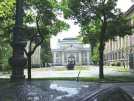 |
| Zagreb |
Zagreb |
Zagreb |
Zagreb |
Zagreb trains
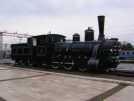 |
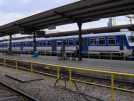 |
| Zagreb trains |
Zagreb trains |
Zagreb trams
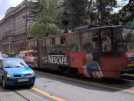 |
 |
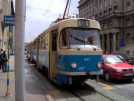 |
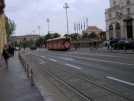 |
| Zagreb trams |
Zagreb trams |
Zagreb trams |
Zagreb trams |
 |
 |
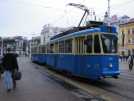 |
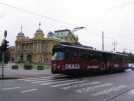 |
| Zagreb trams |
Zagreb trams |
Zagreb trams |
Zagreb trams |

Site
Index
Back to Top
Photos Index
Thanks for coming, I hope you
have enjoyed it, will recommend
it to your friends, and will come
back later to see my site developing
and expanding.
I'm trying to make my pages
enjoyable and trouble free for everyone,
please let me know of any mistakes
or trouble with links, so I can
fix any problem as soon as possible.
These pages are best viewed with monitor
resolution set at 640x480 and kept simple
on purpose so everyone can enjoy them
across all media and platforms.
Thank you.
You can e-mail me at
Webmaster

|